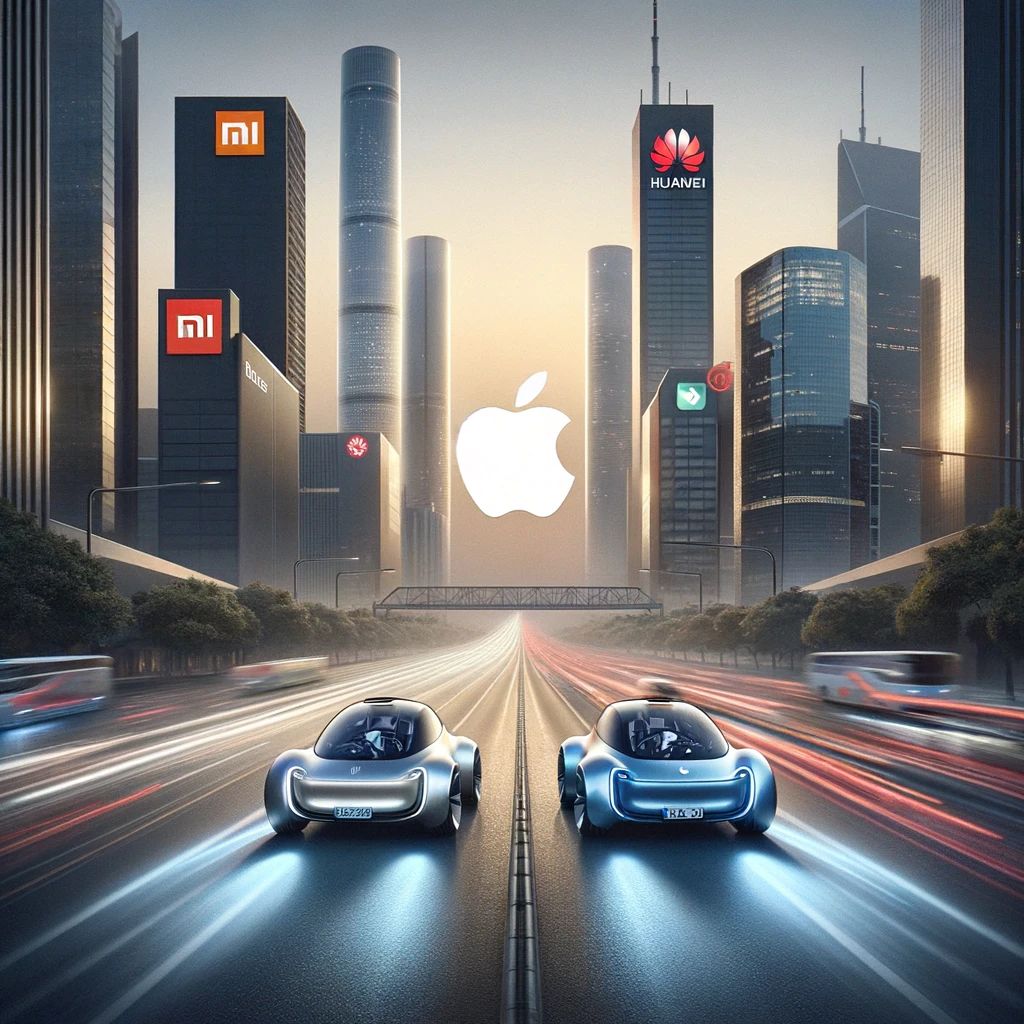Communication Strategies: Chinese Tech Giants Disrupting the EV Market
Xiaomi and Huawei, known for their prowess in consumer electronics, have recently steered into the electric vehicle (EV) market. This move represents a significant shift from their established sectors, aiming to leverage their technological and brand strengths in a new domain. Interestingly, this venture into EVs contrasts with Apple’s decision to withdraw from its EV project, highlighting different strategic paths among tech giants.
Xiaomi’s approach with its SU7 sedan focuses on ecosystem integration. The vehicle is marketed as a high-performance sedan that embodies Xiaomi’s commitment to innovation and smart living. The company targets its existing customer base, emphasizing the vehicle’s integration with its broader ecosystem of smart home products. Xiaomi’s communication strategy revolves around leveraging its established brand loyalty, with the firm banking on its 20 million phone users to potentially become EV customers.
Huawei, while less detailed in its public communication, is expected to follow a similar path. Given its background in telecommunications and technology, Huawei’s entry into the EV market is likely predicated on its expertise in smart technologies and integration capabilities.
The narrative of both companies entering the EV market is set against Apple’s backdrop, which has reportedly stepped back from its EV initiatives. This divergence offers an interesting angle on the communication strategies of tech companies venturing into automotive manufacturing. While Xiaomi and Huawei are expanding their technological frontiers into EVs, Apple’s withdrawal underscores the market’s challenges and uncertainties.
The key to Xiaomi and Huawei’s strategies lies in effective communication, focusing on their strengths in technology and brand equity to reassure and attract customers. By drawing on their reputations for innovation and smart ecosystems, they aim to carve out a new space in the competitive EV market. This approach underscores the critical role of strategic communication in facilitating market entry and expansion, especially in sectors as dynamic and challenging as electric vehicles.
Expanding further, the entry of Xiaomi and Huawei into the EV market underscores a broader trend of tech companies seeking to redefine mobility through advanced technology and smart ecosystems. This transition also highlights the importance of communication strategies in not just announcing a new product line but also in shaping public perception and market expectations.
Xiaomi’s strategic communication emphasizes its innovation and ecosystem integration. By highlighting the seamless connectivity between the SU7 and its range of smart home products, Xiaomi aims to create a compelling narrative for its existing customer base. This approach not only leverages brand loyalty but also positions the company as a pioneer in integrating lifestyle technology with mobility solutions.
Huawei’s communication strategy, although less detailed in the public domain, likely mirrors Xiaomi’s approach in leveraging its technological expertise and brand strength. Huawei’s narrative probably focuses on the synergy between its EV offerings and its existing suite of smart technology solutions, aiming to establish a unique position in the EV market.
In contrast, Apple’s withdrawal from the EV market serves as a stark reminder of the sector’s complexities and the strategic recalibrations required to navigate such an evolving landscape. The different paths taken by Xiaomi, Huawei, and Apple highlight the critical role of strategic communication in managing market entry and expansion in the high-stakes EV arena.
Effective communication strategies enable companies like Xiaomi and Huawei to manage expectations, build anticipation, and foster consumer trust. These strategies are crucial for tech companies venturing into new markets, where success hinges not just on product innovation but also on the ability to articulate a compelling vision for the future of mobility. As the EV market continues to evolve, the strategic narratives crafted by these companies will play a pivotal role in shaping the trajectory of their success in this new venture.




